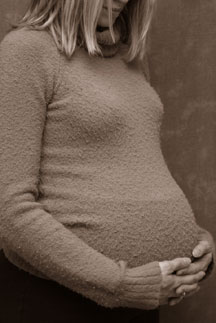Permalink for this post / Permalink for this series
Yesterday I explained that Christians acknowledge the suffering and pain of this world, but live, nevertheless, with hope. Our hope is oriented to the future, when God will fully reveal His kingdom in the transformation of heaven and earth. This means that we live with a certain tension between what is now and what will be in the future.
Theologians have called this tension the “the already and the not yet.” Christ has already died on the cross and rose from the grace, thus banishing sin and defeating death. We have already begun to experience the new creation. The Holy Spirit already lives within us, giving us new life and sharing God’s power with us. But . . . God isn’t finished with us or with creation. The battle between God and Satan still rages, even though the final outcome is secure. We still struggle with sinful and mortal flesh. The powers of this fallen world continue to oppose God and those who align themselves with His kingdom. Suffering is an inevitable component of our “in-between” status, as we live for God in a world that opposes Him. Some suffering comes from the brokenness of creation, from disease and natural disasters. Some suffering comes from the brokenness in human relationships. Some suffering comes from a world that hates us because of our allegiance to Christ (Matt 24:9; John 15:18-21; 17:14).
It’s hard to live in tension. Some Christians try to resolve the tension by over-simplifying the Christian life. You might hear some believers focus entirely upon new life in Christ, even claiming that people with adequate faith should never suffer. Others over-emphasize our suffering with Christ, virtually denying the experience of new creation in the Spirit. But if our life is to be primarily shaped by scriptural truth and not our own lopsided experience, then we must continue to live in the awkward tension of the “already and not yet.”
 Our life in Christ is like that of a woman who is nine months pregnant. I marveled at my wife’s fortitude during her last month of pregnancies. She was extremely uncomfortable, carrying what looked like a giant pumpkin in her belly. Sleep came with great difficulty, since no position would take away her discomfort. Yet, as Linda suffered with physical struggles that would have turned me into a self-pitying pouter, she abounded with hope. She counted the days until she would hold her baby, and faced her physical discomforts with particular joy. What kept her going? The sense that she was in some way already a mother, even as she was not yet the mother she would become when she could finally hold her child. She lived in the “already and not yet,” sustained by hope. (Picture: Not my wife, but a photo I purchased from iStockphoto.com.)
Our life in Christ is like that of a woman who is nine months pregnant. I marveled at my wife’s fortitude during her last month of pregnancies. She was extremely uncomfortable, carrying what looked like a giant pumpkin in her belly. Sleep came with great difficulty, since no position would take away her discomfort. Yet, as Linda suffered with physical struggles that would have turned me into a self-pitying pouter, she abounded with hope. She counted the days until she would hold her baby, and faced her physical discomforts with particular joy. What kept her going? The sense that she was in some way already a mother, even as she was not yet the mother she would become when she could finally hold her child. She lived in the “already and not yet,” sustained by hope. (Picture: Not my wife, but a photo I purchased from iStockphoto.com.)
That’s exactly how we should live as Christians, with joyful hope in the midst of genuine suffering, not denying the pain, nor succumbing to despair. The tension we feel in this world as Christians will not be resolved this side of the new creation.

